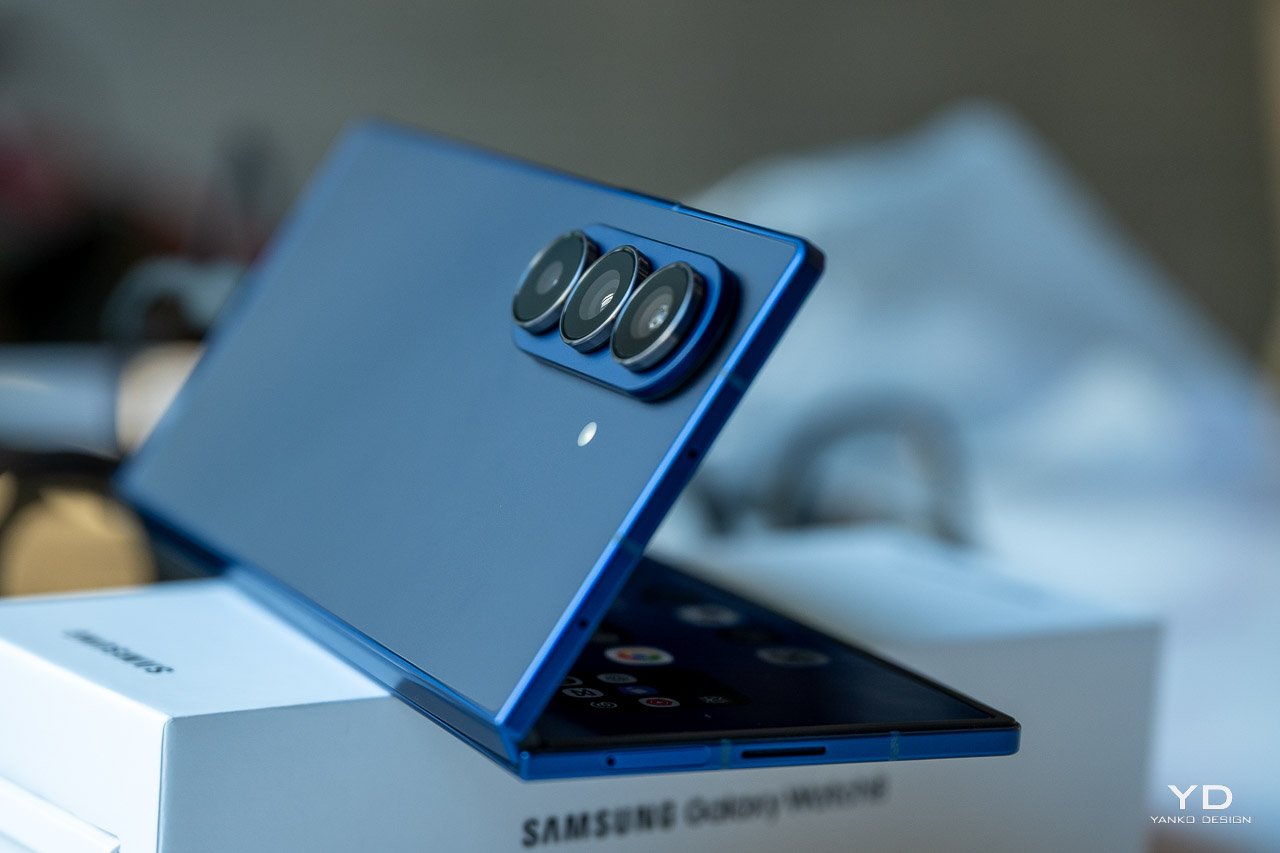So I just spent some quality time with the Galaxy Z Fold7, and I have to say Samsung finally figured it out. After years of watching them iterate on this concept, this feels like the first foldable that actually makes sense for regular people.
Designer: Samsung
The moment I picked it up, something clicked. At 215 grams, this thing is lighter than the S25 Ultra, which is kind of mind-blowing when you think about it. At just 215 grams, Galaxy Z Fold7 is even lighter than Galaxy S25 Ultra. It is just 8.9 mm thick when folded and 4.2 mm thick when unfolded. We’re talking about a 0.7mm difference between Samsung’s regular flagship and something that opens into an 8-inch tablet. That engineering constraint is exactly the kind of problem-solving that gets me excited about tech.
The unboxing experience is pretty straightforward Samsung stuff. What’s in the box: 1. Smartphone | 2. Data Cable | 3. Ejection Pin No charger included, which is expected at this point. The packaging feels premium without being wasteful, and everything is laid out nicely. The phone sits in that familiar Samsung foam cutout, and honestly, the first thing that hits you is how thin it looks even in the box.
Setting this thing up was surprisingly smooth, especially coming from my S25 Ultra. Samsung’s Smart Switch just worked. I plugged in the USB-C cable, and within about 20 minutes, everything was transferred over. Apps, photos, settings, even my weird home screen layout carried over perfectly. It’s one of those things that just works without any fuss, which is exactly what you want when you’re switching to a completely different form factor.
Opening it up still feels pretty cool, but now it actually feels practical too. The 4.2mm thickness when unfolded is thinner than most regular phones, and that jump from 7.6 inches to 8 inches on the main display hits different. It’s not just bigger, it’s finally big enough to feel like a proper tablet experience. The crease is there if you’re looking for it, but honestly, after a few minutes of use, your brain just filters it out. These Samsung OLED panels continue to deliver great colors, solid contrast, and that 120Hz refresh rate makes everything feel smooth.
Here’s what surprised me most: removing S Pen support was actually smart. I know that sounds weird, but Samsung made a trade-off and chose correctly. The thinness, lightness, and improved durability they got by ditching the S Pen compartment is worth it. This feels like Samsung finally stopped trying to be everything to everyone and focused on making the best possible foldable experience. Sometimes design is about saying no to features, and this was the right call.
The 200MP main camera is solid. This is the first time a foldable has felt like it has proper flagship-level cameras. Previous Folds always had decent cameras, but you knew you were compromising. This one uses the same Pro Visual Engine as the S25 Ultra, and the photos I took looked really good. Coming from the S25 Ultra, the camera experience feels familiar, which is exactly what you want. The wider field of view on the ultra-wide camera (120° versus 85° previously) is noticeable too. Group shots and landscapes have more breathing room.
The 6.5-inch cover screen with the new 21:9 aspect ratio is a big improvement. It’s wider than before, which makes typing way more comfortable. I could actually respond to messages without feeling like I was typing on a calculator. The 120Hz refresh rate makes everything feel smooth, and the brightness is excellent. No issues using it outdoors during the demo.
The Snapdragon 8 Gen 2 (customized for Galaxy) handles everything I threw at it well. Multitasking between apps, some light gaming, video editing, it all felt smooth. The 4400mAh battery is the same capacity as before, but Samsung claims better efficiency thanks to the processor improvements. In my brief testing, battery life seemed solid, though I’ll need more time to really judge this properly.
The build quality is where Samsung really stepped up. The Advanced Armor Aluminum frame feels premium and solid. Previous Folds always felt a bit delicate, like you were handling expensive jewelry that might break. This one feels like a phone you could actually daily drive without constant anxiety. The hinge mechanism is smooth, and Samsung’s durability claims (tested to 400,000 folds) seem more believable this time.
Everything just works, especially when migrating from the S25 Ultra. The muscle memory transfers over perfectly because Samsung kept the UI consistent. The camera app feels the same, the settings are in the same places, and even the gesture navigation works identically. It’s like using a familiar phone that happens to unfold into a tablet.
The Galaxy Z Fold7 feels like the culmination of everything Samsung has learned about foldables. It’s not perfect, no device is, but it’s the first foldable that feels like it could genuinely replace your main phone rather than just complement it. The form factor finally makes sense, the performance is there, the cameras are flagship-level, and the build quality inspires confidence.
This is the foldable that could actually go mainstream. Samsung has created something that enhances your digital life rather than complicating it, and that’s exactly what good design should do. After years of foldables feeling like expensive experiments, this one feels like a mature product that regular people might actually want to use.
The post My Galaxy Z Fold7 First Impressions: Samsung Just Made the Impossible Phone first appeared on Yanko Design.

